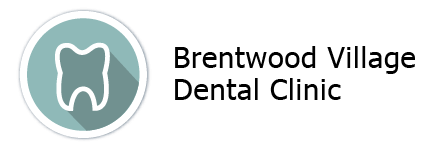From daily brushing and flossing to regular dental visits, keeping your teeth in tip-top shape is an important part of overall health care. But what happens if you don’t keep up with your daily dental hygiene? Dentists in NW Calgary often recommend a deep dental cleaning to halt gum disease and fight its effects, getting you back on track to a healthy mouth.
Deep dental cleaning removes the buildup of plaque and tartar from your teeth, reducing gum inflammation and improving the health of your gums to keep your smile looking its absolute best. Left unattended, this buildup can cause gingivitis and eventually, periodontitis – a serious infection that eats away at the bone supporting your teeth, in its most severe form, causing the teeth to fall out.
The advantages of a deep dental cleaning
There are a few advantages to getting a deep dental cleaning at your NW Calgary dentist’s office, including:
- Prevention of gum disease
- Fighting bad breath
- Protecting the roots of your teeth
- Promotion of healthy gums
- And prevention of tooth loss
The difference between a routine and deep dental cleaning
During a routine dental cleaning, your dental professional works to remove the plaque and tartar buildup from above the gum line. A deep cleaning goes much deeper – removing the buildup that has been forced into the space between the gums and teeth to promote the healing of gum disease and promote a healthy mouth.
When is a deep cleaning needed?
Deep dental cleaning is typically recommended when your dentist notices gum disease-causing your gums to pull away and cause pockets. Any pockets more than 5mm deep will require immediate deep cleaning.
What to expect from a dental deep cleaning
A full dental deep cleaning will likely take multiple visits to your NW Calgary dental office as it’s a much more in-depth process than routine cleaning. Here is a basic rundown on what to expect during your appointment(s):
- Medical History Review – Your dentist will review your dental and overall medical history to ensure they haven’t missed any important information. Your dentist will also take a look inside your mouth to determine the severity of the buildup
- Perform an X-Ray – X-ray images of your teeth will be taken to determine the extent of the build-up and allow your dental team to visualize the areas to focus on during cleaning.
- Pocket Measurement – Your dentist will measure the pockets that have formed in your gums with a special tool to determine the depth of each one
- Go over the plan – As this service is spread across multiple appointments, prior to beginning the service, your dentist will go over the plan with you, so you know exactly what to expect from each appointment.
Once you and your dentist have formed a plan for your teeth, the cleaning can begin!
- Step One – Tooth Scaling: Similar to routine dental cleaning, this procedure removes the plaque and tartar buildup from your teeth. As mentioned above, the difference between routine and deep cleaning is where the buildup is removed from – in this case, scaling will remove the buildup that has formed below the gumline.
- Step Two – Root Planing: Root planing is the removal of plaque and tartar buildup from the roots of the teeth. This procedure helps reduce the space between gums and teeth, allowing the gums to reattach to the teeth.
Depending on the severity of each case, these steps can take two or more appointments to complete. Most individuals find the discomfort associated with these procedures to be bearable; however, in severe cases, and cases where the individual experiences sensitivity issues, the level of discomfort may be significantly higher. If this is the case, your dentist will administer a local anaesthetic as needed to numb the area around your gums.
You will likely experience some pain and discomfort in your gums post-treatment, along with minor swelling and bleeding. You can reduce sensitivity by eating soft foods, and avoiding extremely hot or cold foods for a few days following the procedure. Over-the-counter pain medications such as acetaminophen or ibuprofen can ease pain and reduce swelling. You can also rinse with warm salt water to help keep the affected areas clean and assist in bringing down swelling.







